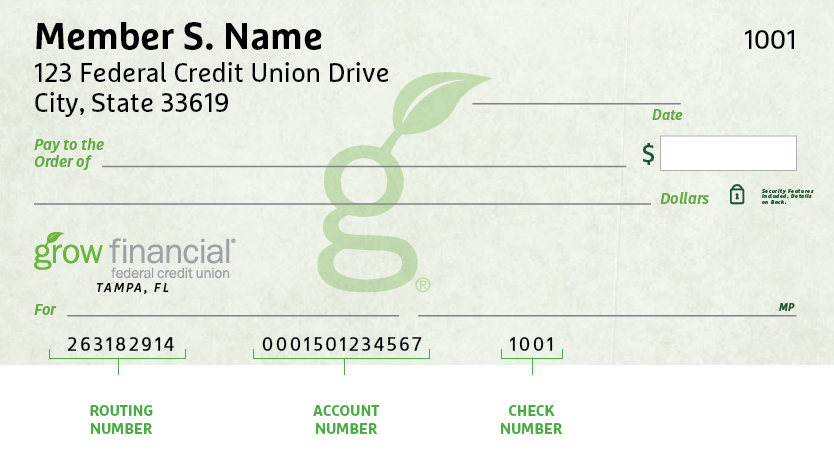- Personal
- Membership
- Membership
- Rates & Fees
- Checking
- Checking
- Personal Loans
- Personal Loans
- Wealth Management
- Investment Services
- Financial Advisors
- Resource Center
- Business

July 15, 2022
Retirement Planning 101: Understanding the Basics
If you’ve been putting off planning for retirement because the topic is daunting, you’re not alone. Retirement seems like such a distant thing for many people that it’s easy to delay thinking about it. Today we’re breaking down some retirement planning basics to help you get started: understanding the value of time, thinking about your own retirement expectations and choosing the right savings vehicles.
1. Understand the value of time.
When it comes to saving for retirement, time is one of the most important advantages. Many people assume they can hold off saving for retirement and make up the difference later, but that can be a very costly mistake. Why? It comes down to compound interest and the value of time. (Learn more about compound interest.)
Basically, the further off your retirement is, the more time your investments have to potentially grow. Only a few years can make a big difference in how much you’ll accumulate over time. Let’s look at an example.1

Figures quoted are for illustrative purposes only and are not necessarily indicative of past or future results of any specific investment. They may or may not include consideration of the time value of money, inflation, fluctuation in principal, or, in many instances, taxes.
As shown in the graph above, if you invest $3,000 every year, which is $250 per month, starting when you’re 20 years old, you’d retire with around $680,000 at age 65. If you wait until age 35 to start saving that same $3,000 annually, you’ll accumulate about $254,000. And, if you wait until age 45 to start saving the same amount, you’ll accumulate only about $120,000 by the time you retire.
2. Think about your own retirement expectations.
Before you can begin retirement planning effectively, you’ll also want to ask yourself three questions:
- What kind of retirement do I want?
- When do I want to retire?
- How long will my retirement last?
When you picture your ideal retirement, what do you see? Whether you see yourself traveling the globe or simply enjoying the peace and quiet of your own living room, you probably imagine financial independence. Maintaining financial independence in retirement depends upon the lifestyle we want, so it’s important to estimate how much income you’ll need to fund your retirement.
It’s also important to think about when you’d like to retire. The earlier you retire, the shorter the timeframe in which you can accumulate funds, and the longer those funds will need to last. Although you can retire anytime, most people wait until they’re eligible for Social Security retirement benefits. That starts at age 62, and the earliest you can receive full Social Security retirement benefits is age 66 to 67, depending on the year you were born.
Lastly, don’t forget to think about how long your retirement funds will need to last. You likely won’t want to plan for just a decade or so of funds. As life expectancy has increased at a steady pace over the years and may continue increasing, it’s not unreasonable to plan for a retirement period that lasts for 25 years or more.
3. Choose the right savings vehicles.
Once you’ve thought about the above topics, you’ll probably be asking yourself, “Okay, so what’s the actual best way to save funds for retirement?” We recommend taking advantage of special tax-advantaged retirement savings vehicles, like 401(k)s and Individual Retirement Accounts (IRAs).
401(k): With this account, your contributions come out of your salary pre-tax, reducing your current taxable income now while also growing tax-deferred until withdrawn. Many 401(k) plans include employer-matching contributions (a form of “free money”), which should make them your first choice in saving for retirement.
IRA: Traditional IRAs, like 401(k)s, feature tax-deferred earnings growth, and can lower your current taxable income if you qualify to make tax-deductible contributions. Like a 401(k), funds in traditional IRAs are not taxed until they’re withdrawn. Learn more about IRAs.
Roth 401(k)s and Roth IRAs: Roth contributions are made post-tax, not pre-tax, so Roth contributions don’t provide you with immediate tax savings. They allow you to make qualified distributions completely free from federal income taxes down the road, assuming federal tax law related to Roth funds remains consistent.
Since these vehicles are intended to help you save for retirement, a 10% additional penalty tax applies if you take a withdrawal before reaching age 59 ½, unless an exception applies — so you really want to use these to plan for the long haul.
Questions? Contact a CFS Financial Advisor.
Grow has contracted with CUSO Financial Services, L.P. (CFS) to provide investment services, and your CFS Financial Advisor will help you build a plan that meets your needs. The advisor will look at your current spending, saving and investing, learn about your goals and priorities, make objective recommendations and support your efforts moving forward through the implementation and management of your plan.
SCHEDULE A COMPLIMENTARY CONSULTATION
1The graph shows an estimate of how much your initial savings plus monthly contributions can grow over time, assuming a 6% interest rate and annual compounding. Remember that adjustments in any of those variables will change the outcome.
Non-deposit investment products and services are offered through CUSO Financial Services, L.P. (“CFS”), a registered broker-dealer (Member FINRA/SIPC) and SEC Registered Investment Advisor. Products offered through CFS: are not NCUA/NCUSIF or otherwise federally insured, are not guarantees or obligations of the credit union, and may involve investment risk including possible loss of principal. Investment Representatives are registered through CFS. The Credit Union has contracted with CFS to make non-deposit investment products and services available to credit union members. For specific tax advice, please consult a qualified tax professional.
Posted In:
How to Find Your Routing & Account Numbers
When you make a payment online, by phone or on a mobile device, you may be asked for our routing number and your checking account number. Credit unions and banks use these numbers to identify accounts and make sure money gets where it’s supposed to be. You’ll also need to provide your routing and checking account numbers for:
- Direct deposits
- Electronic checks
- Military allotments
- Wire transfers
Where to Find Your Routing & Checking Account Numbers
Your personal checks include both our routing number and your account number, as shown on the Grow check example below.

Don’t have a Grow check? No worries.
Visit any Grow store and ask for a Direct Deposit Form. It lists both your routing number and checking account number.
Making a Loan Payment
When it comes to making payments, we try to make it as painless as possible to pay your loan every month. We have several different ways to pay, including convenient online options.
Pay Online
You have two ways to pay online by transferring funds from another bank or credit union.
- Grow Online Banking (Preferred payment method for any loan)
This is the simplest way to pay your loan. You can make one-time payments or set up automatic recurring payments in Grow Online Banking. Once you log in, select “Transfer/Payments” from the menu. If you’re not enrolled in Grow Online Banking yet, you can set up your account in just a few minutes.
Log In
- Debit Card or ACH (Available for auto, personal loans and HELOCs)
Note: ACH and debit card payments are not available for credit cards or most mortgages, except HELOCs.
We accept ACH payments with no additional fees, consumer Mastercard® and Visa® debit cards with a convenience fee of $4.95, or commercial Mastercard® and Visa® debit cards with a convenience fee of 2.95% of the payment amount. To get started with an online ACH or debit card payment, select Pay Now below.
Pay Now
Pay by Mail
You can also pay any Grow loan by check through the mail. Please remember to include your account number and Grow loan number on the check. (For credit card payments, please do not write your 16-digit credit card number on the check, which can cause a delay in processing the payment.)
Address for auto, credit card, personal loan and HELOC payments:
Grow Financial Federal Credit Union
P.O. Box 75466
Chicago, IL 60675-5466Address for personal first or second mortgages and home equity payments:
Grow Financial Federal Credit Union
P.O. Box 11733
Newark, NJ 07101-4733You Are About To Leave GrowFinancial.org
At certain places on this site, there are links to other websites. Grow Financial Federal Credit Union does not endorse, approve, represent, certify or control those external sites. The credit union does not guarantee the accuracy, completeness, efficacy, timeliness or accurate sequencing of the information contained on them. You will not be represented by Grow Financial Federal Credit Union if you enter into a transaction. Privacy and security policies may differ from those practiced by the credit union. Click CONTINUE if you wish to proceed.
